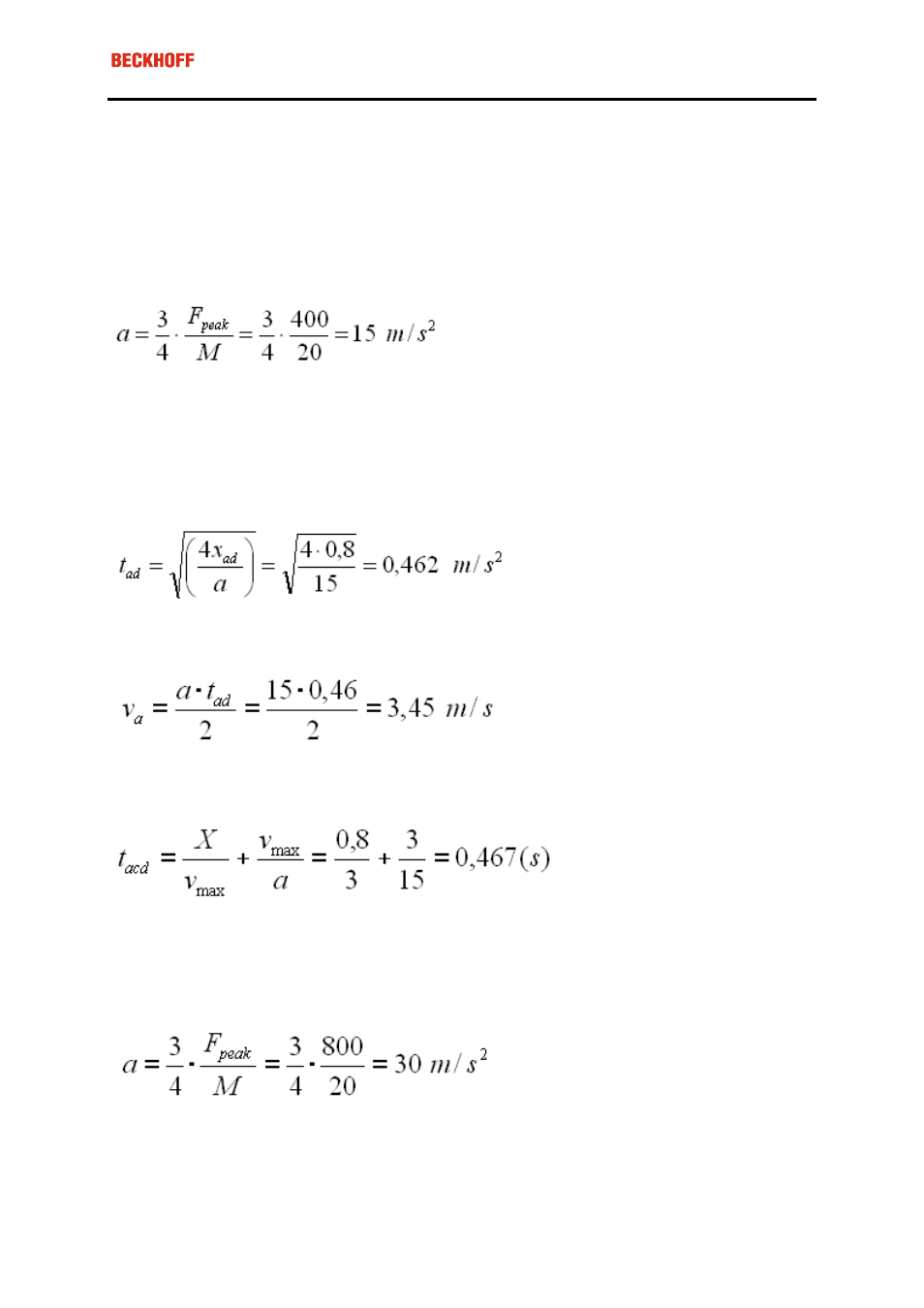Dimensioning force and speed, Step 1: worst case cycle – BECKHOFF AL2000 Application User Manual
Page 26

Eiserstraße 5 / D-33415 Verl / Telefon 05246/963-0 / Telefax 05246/963-149
26
Dimensioning force and speed
Step 1: Worst case cycle
Look for the severest job-cycle your application meets. Worst cases happen generally in two situations. First
when the motor produces a high holding force and second where the motor is accelerating and deceleration
continuously (short moves) with little standstill time. Now determine the quantities during the severest job-cycle.
In the case there is only one job-cycle. First let’s choose the type AL2006 motor.
• Calculate the acceleration of this motor:
Note: The value of F
peak
is can be found on the AL2000 series specification sheet.
• The formula to calculate the required time to cover the distance depends on whether the linear motor reaches
its maximum velocity vmax during the movement.
- In the case of a short move (vmax not reached):
- In this case the velocity after t
a
is:
This calculated velocity v
a
exceeds the maximum velocity required for this application (v
max
= 3 m/s). It is obvi-
ous that the chosen linear motor reaches the maximum velocity somewhere during the motion. In this case we
will have to calculate the required time using the formula for long moves.
Notice that this calculated time exceeds the required travelling time for this application (0,4 s). Therefore a more
heavy type motor like the AL2012 needs to be selected.
So let’s choose the type AL2012 and repeat the calculations.
• Acceleration:
• Required time using the formula for short moves (v
max
not reached):
